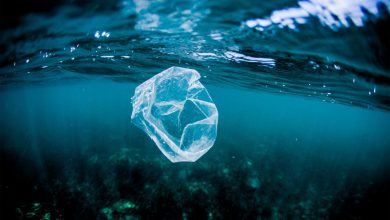Nurses Share How to Wear a Face Mask to Avoid Germs + What Not to Do

The selection to put on a face masks might be a invaluable instrument in stopping the unfold of germs and viruses.
A recent study reveals that face coverings scale back up to a threefold the unfold of viruses. Respiratory illnesses are mostly unfold by coughing, sneezing, or speaking when tiny droplets from the mouth or nostril land on one other individual.
But at the same time as they assist in decreasing the unfold of viruses, coverings could lead on to extra reinfections if you don’t adhere to correct security tips.
What are face masks? Can they assist?
Masks are coverings constructed from totally different supplies with ties or elastic bands that assist cover your nostril and mouth, therefore stopping the unfold of viruses. Surgical masks are probably the most common and efficient ones.
If you put on them accurately, masks assist scale back the transmission of comparatively massive microorganisms splashes and droplets.
Surgical three-layered masks characteristic the next:
- Outer layer to repel physique fluids akin to blood
- Middle layer which filters pathogens
- Inner layer for the absorption of moisture in exhaled air
Some face masks will not be ready to assist towards some particles, given the perimeters don’t match tightly across the mouth and nostril.
Who Should Wear Face Masks?
Anyone getting out in public, or the place the danger of contracting respiratory-related viruses are excessive, ought to put on a face masks to keep away from contracting or spreading the identical.
However, the Centers for Disease Control recommends that individuals put on face masks throughout a viral outbreak, particularly:
- Those who’re affected by particular respiratory sickness
- Those exhibiting indicators and signs of the sickness
- Those taking good care of sufferers affected by respiratory sicknesses.
For well being staff, nevertheless, WHO recommends that they use surgical masks and take strict security measures since they’re at increased threat. They embrace the N95 and FFP3, which assist to supply safety towards tiny particles and to filter out 95% particles.
Avoid these habits..
The masks even have a tight-fitting to stop doable leakage on the perimeters.
Surgical masks are additionally fluid-resistant and supply safety towards bigger airborne particles.
Home-made masks, however, helps to scale back considerably the possibilities of virus unfold amongst these not exhibiting signs of the sickness.
Between 24 and 48 hours of an infection are primarily probably the most essential as you received’t even know you’re contaminated, therefore spreading it unknowingly. Wearing face-covering reduces such.
Despite their essential function, there’s little scientific backing for the usage of masks for members of the general public. They can simply get contaminated when individuals sneeze or cough across the individual carrying it.
Further, they may give a false sense of safety to individuals carrying them, making them ignore different important measures akin to correct hand hygiene and the necessity for social distance, that are the best preventive measures.
When to Wear a Face Mask
According to the World Health Organization, solely put on a masks when experiencing the signs of respiratory infections akin to cough.
WHO additionally recommends that you simply put on a masks when providing take care of a respiratory-illness affected person, extra particularly once you’re 6 toes shut to the affected person.
Surgical masks, as an illustration, successfully entice greater respiratory sickness droplets. However, the case might be totally different with some viruses such because the coronavirus as a result of;
- They have tiny particles.
- There could be a doable leakage by the areas not adequately coated by the masks given it doesn’t match tightly on the perimeters.
The Center for Disease Control additionally recommends that the general public use masks when in public gatherings, even educating individuals how to make them.
Bottom-line is, masks act as a unfold barrier between the caregiver and the affected person and never a defend. Hence, CDC doesn’t declare them bullet-proof for viral security since they’re not sealed and will permit in small particles.
Whether or not you’re sick, carrying a masks when in public or gathering is a easy present of care to the individuals round you.
Putting On a Mask – The Dos
While face masks could be helpful in stopping the unfold of bigger virus particles, additionally they current many dangers.
The outer a part of the masks is extra doubtless to be contaminated. When it so occurs, touching it and touching your face with out taking correct measures akin to hand hygiene could lead on to contamination. If you will have to put on a masks, observe the next;
- First, wash your fingers completely with cleaning soap and working water for at the least 20 seconds. Be positive to attain all of the components of the hand, together with the nails, palm, and the again of the hand. Alternatively, you possibly can rub your fingers with alcohol-based hand sanitizer.
- Next, examine the masking to see for those who can spot such defects as tearing.
- If there’s no harm, put on the masks by inserting the coloured half outward. Carefully position the masks to cover your nostril and mouth.
- If it has ear loops, fastidiously place them on every ear. For those with strings, use them to maintain the masks, properly tying the higher and decrease strings in the back of your head. The ones with bands needs to be simpler to handle. Roll the band to the again of your head.
- Further, make sure the higher strip of the masks takes the form of your nostril. To do that, pinch it as you press it down along with your fingers.
- Ensure the underside of the mouse covers each your mouse and chin. If not, pull it down to position it effectively till it suits.
- Ensure the masks suits, supplying you with a snug, well-protected, and comfy feeling.
- Resist the temptation of touching the masks as soon as its in position. If you will have to, ensure to correctly clear your fingers utilizing alcohol-based sanitizer or cleaning soap and water.
- Dispose of face masks once you discover any indicators of harm, when it will get soiled or when overly moist. If it’s reusable, wash and dry it correctly as frequently as doable. Alternatively, you possibly can preserve the masks in a plastic bag till you’re ready to clear it. On each events, completely cleanse your fingers after that.
- Dispose of the masks correctly in a closed bin for additional security. Wash your fingers with scorching water and cleaning soap for at the least twenty seconds.
Surgical masks and home-made coverings don’t supply the identical stage of safety. However, for those who use them correctly as outlined above, it can save you the neighbour. Following these tips will considerably scale back the unfold of viruses.
The Don’ts
Putting on a masks will not be exactly relevant to everybody. Children below 2 years shouldn’t put on masks.
Similarly, these having difficulties in respiratory must also keep away from such coverings as they have an inclination to do extra harm than good.
To keep away from contamination, take the next measures when the masks is in position:
- Avoid touching the masks unnecessarily after getting it on. The outer components of the masks entice pathogens when somebody sneezes or coughs shut to you. Some viruses can keep for days on the dress. Touching it and touching your face might be disastrous.
- Don’t go away the masks hanging from one ear. This carelessness could lead on to contamination.
- Don’t go away the masks hanging in your neck. If you not want it, safely take away and eliminate it appropriately.
- Tempting as it might appear, don’t reuse a disposable masks. Reusing masks meant for single-use, akin to surgical masks, places you and others in grave hazard.
- Do not crisscross ties. Ensure every tie is on the fitting ear. This will make sure the masks suits effectively, leaving no space for pathogens to enter.
- Don’t put on a masks that’s worn out, broken, or dump. Dispose of it instantly in a closed bin
- Remove the masks as quickly as you’re away from sufferers or public gatherings.
Cloth coverings or face masks?
Both material coverings and face masks may help stop viruses in public gatherings or when in shut contact with contaminated individuals.
Though their stage of safety is decrease in contrast to respirators and surgical masks, material coverings nonetheless supply safety towards respiratory droplets, which could comprise pathogens. Here are recommendations on correct utilisation:
- When utilising them, select one that matches completely for max safety.
- Avoid face coverings fabricated from polyester, artificial, or spandex. Most viruses can keep longer on these supplies.
- Instead, go for ones fabricated from 100% cotton. If you make the masks by yourself, the Johns Hopkins Medicine’s sample design can turn out to be useful.
- To keep away from shrinking, wash, and dry the material two or thrice earlier than utilising it.
- Scarfs may work in some cases. However, they’re not very efficient, particularly for extremely infectious pathogens.
Final Thoughts on How to Wear a Face Mass to Stop Spreading Germs
Though not as environment friendly as surgical masks and respirators, face masks shield towards pathogens. While respirators shield towards smaller particle pathogens, masks assist with bigger airborne particles.
However, you could adhere to the above security measures to keep away from placing your self and people round you at risk. Learning how to accurately select, make, put on, and eliminate your masks will assist decrease transmission charges.
For most safety, couple up carrying masks with different security measures akin to sustaining excessive ranges of hygiene, holding social distance, and looking for medicine early. Be positive additionally to observe the fitting tips for making home-made masks.












